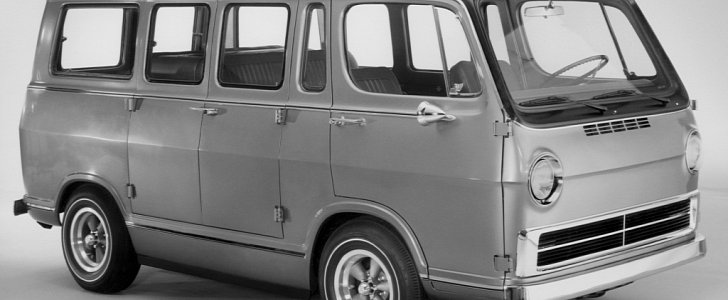These days, automakers prepare some sort of concept car for every major auto show in the calendar. But the thing is, concepts these days pale in comparison to the golden age of one-offs, as in the '50s and '60s. One of the concepts that pushed the envelope for the entire industry is, of course, the GM Electrovan.
Revealed in 1966, the year that brought us the TV debut of Batman, the GM Electrovan celebrates its 50th anniversary in 2016. As the world’s first hydrogen-powered fuel cell vehicle, the Electrovan is the spiritual predecessor of models such as the Hyundai Tucson FCV. Five decades later, the Electrovan continues to be regarded as the concept car that got the FCV ball rolling.
Floyd Wyczalek, now 91 years old, was the project manager of General Motors’ fuel cell development program. He headed a team of 200-something people. With that much manpower, everything went as planned. “We had three shifts of people on this project starting in January 1966 and finishing 10 months later,” recollects Wyczalek. “We had one running demo for the Progress of Power press conference in October that year," he concluded.
50 years since, General Motors has invested more than $2.5 billion in hydrogen fuel cell technology. Considering that it all started with a hydrogen-powered fuel cell van based on the GMC Handi-Van, the GM Electrovan is a very impressive feat. Located beneath the floor we find 32 fuel cell modules, which supply a continuous output of 32 kW and a peak output of 160 kW.
Tipping the scales at 7,100 pounds (3,220 kilograms), the 1966 General Motors Electrovan is so heavy due to its cryogenic hydrogen and oxygen tanks, as well as its electrolyte reservoir. No less than 45 gallons of potassium hydroxide fill the modules, piping, and reservoir, but be that as it may, the Electrovan prides itself on admirable specifications for an experiment.
Top speed? 70 miles per hour (112 km/h). 0 to 60 mph (96 km/h)? 30 seconds or thereabout. As for range, General Motors rated it at 150 miles (241 kilometers), which is not bad at all considering that the Toyota Mirai manages roughly double the range (312 miles or 502 kilometers).
The GM Electrovan was mostly forgotten after the project ended. Left for dead in a Michigan warehouse for 31 years, the Electrovan was rediscovered in 2001. Now, though, everyone can admire the original hydrogen fuel cell vehicle at the GM Heritage Center in Sterling Heights, Michigan.
Floyd Wyczalek, now 91 years old, was the project manager of General Motors’ fuel cell development program. He headed a team of 200-something people. With that much manpower, everything went as planned. “We had three shifts of people on this project starting in January 1966 and finishing 10 months later,” recollects Wyczalek. “We had one running demo for the Progress of Power press conference in October that year," he concluded.
50 years since, General Motors has invested more than $2.5 billion in hydrogen fuel cell technology. Considering that it all started with a hydrogen-powered fuel cell van based on the GMC Handi-Van, the GM Electrovan is a very impressive feat. Located beneath the floor we find 32 fuel cell modules, which supply a continuous output of 32 kW and a peak output of 160 kW.
Tipping the scales at 7,100 pounds (3,220 kilograms), the 1966 General Motors Electrovan is so heavy due to its cryogenic hydrogen and oxygen tanks, as well as its electrolyte reservoir. No less than 45 gallons of potassium hydroxide fill the modules, piping, and reservoir, but be that as it may, the Electrovan prides itself on admirable specifications for an experiment.
Top speed? 70 miles per hour (112 km/h). 0 to 60 mph (96 km/h)? 30 seconds or thereabout. As for range, General Motors rated it at 150 miles (241 kilometers), which is not bad at all considering that the Toyota Mirai manages roughly double the range (312 miles or 502 kilometers).
The GM Electrovan was mostly forgotten after the project ended. Left for dead in a Michigan warehouse for 31 years, the Electrovan was rediscovered in 2001. Now, though, everyone can admire the original hydrogen fuel cell vehicle at the GM Heritage Center in Sterling Heights, Michigan.







